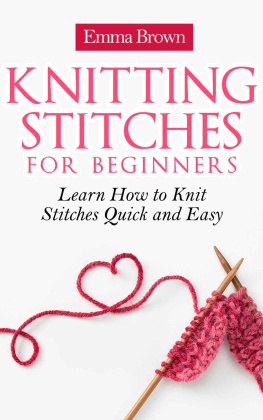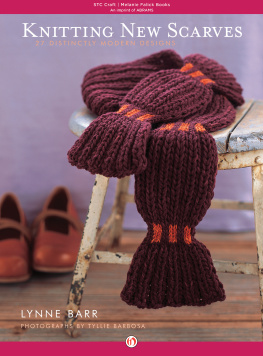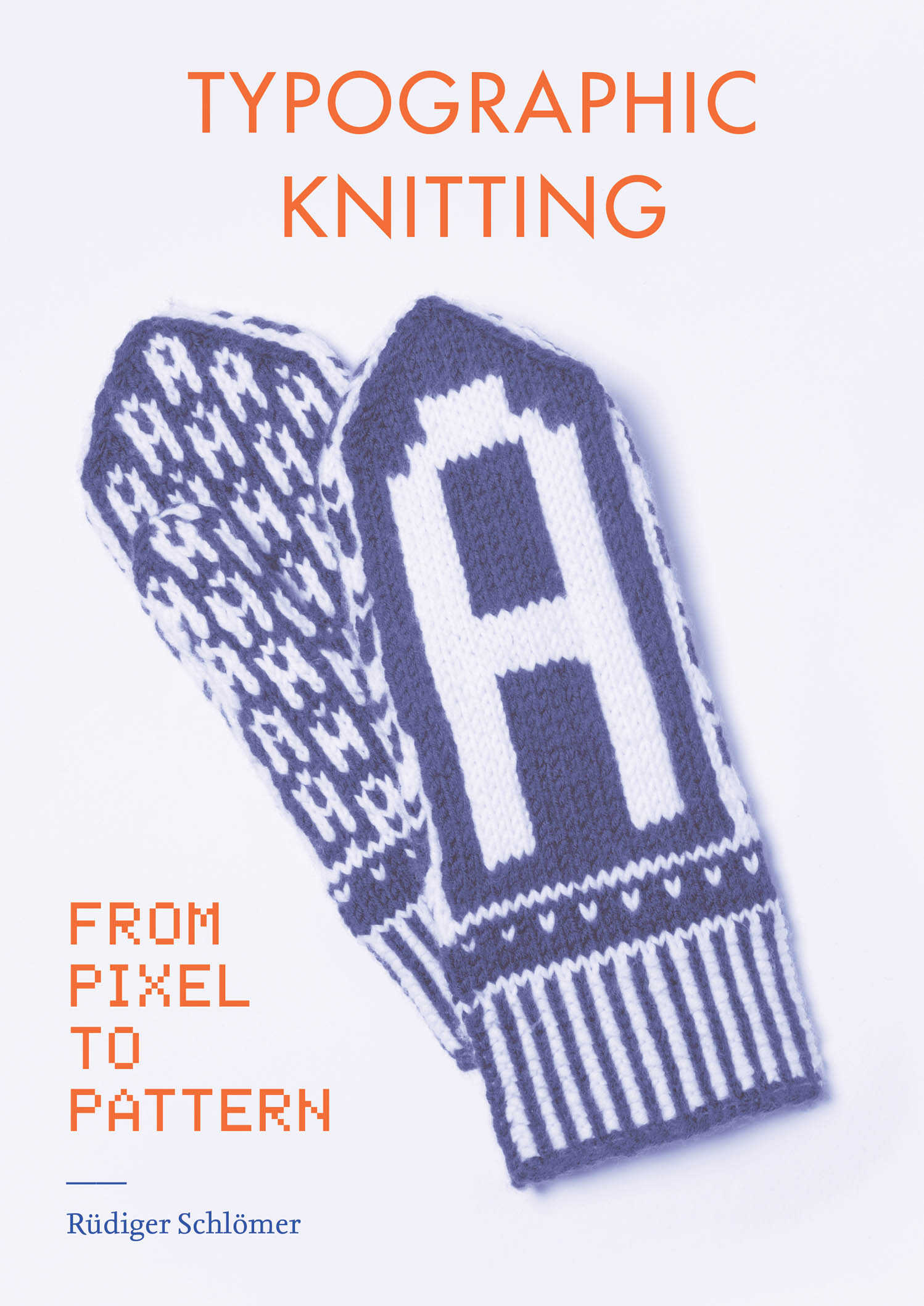

Of Pixels and Stitches
We can hardly imagine using or designing type without the latest programs and tools. Typography and type design have come to form the basis of a new, digital craftsmanship. But those who would like to connect with the tactile side of their typographic practice can do so through knitting, a kind of analog program, if you will, that translates pixels into stitches.
Knitting type presents digital typography with a form of materialization that, unlike rapid prototyping, retains a certain measure of personal distinctness. It allows practical digital typography to be enhanced by texture, feel, warmth, wearabilityand, last but not least, camaraderie, through knitting circles, for example.
People who knit letters or words experience a slowing down of the design process, a sensation familiar to stonemasons and intarsia artists (intarsia in knitting derives its name from the wood inlay techniqueit is the process of fitting color fields together in a woven design). Typeknitting is typographic meditation, a kind of digital detoxalbeit one that doesnt spurn digital technology but instead lends itself to it as a practical plane for reflection. And, incidentally, in doing so it also underlines the Latin origins of the word digitalfrom digitus, meaning finger.
TEXTILE WRITING
Combining knitting and typography is first and foremost a mental exercise. Typeknitting demands constant translation between the physical knitting process and the optical result. The run of the yarn and design of the letter must be conceived differently than what the look of the resulting textile would suggest. In typeknitting, letters are knitted backward: from right to left and from bottom to top. Stitches dont have a basic square shape, nor do they fit exactly into the design grid of a pixel font. Stranded yarn that is not loose enough can sabotage a piece of work by pulling the knitted result too tight.
These idiosyncrasies in translation from design to product can be a hindrance when you expect letters to be simply knitted up as a one-to-one copy. As you explore the freedom inherent in typeknitting while also applying the rules of the knitting that youre used to, you will likely discover many exciting visual opportunities that would hardly spring to mind when designing on the computer.
Typeknitting combines the peculiarities of programming and calligraphy: on the one hand, its technical, logical, and preciseand on the other, tactile, flowing, and organic. Like a polished stroke of the brush, an even row of stitches is the result of lots of practice by which the corresponding hand movements become second nature. Its no coincidence that knitting patterns look rather mechanical, like pixel diagrams. A knitting pattern is a universal visual code that lends form to the variables of knit and purl stitches. The symbols of this cryptography can be universally decoded no matter what language you speak.
DIGITAL-ANALOG WEAVE
Type and textiles share many common prototypes, found in the form of woven tapestries and intarsia embroidery, for instance. Time and again thread has been a medium used to capture images and text in elaborate processes and thus honor their significance. This is still the case today, even in popular culture, as evidenced by the soccer fan scarf.
Both typography and textiles have adapted to the work and reproduction techniques of their day and age. Typographical terms like leading, font, and foundry predate digital design, and remind us of the step-by-step transformation of typographic processes from manual calligraphic copying, through woodcut printing and lead composition, to digital web fonts, with many other stages in between. Automation, and later, digitization, have also had a major impact on the production of textiles, yet at the same time have been influenced by earlier techniques themselves: the punch cards on the first mechanical looms circa 1805 are heralded as an early form of digital coding and marked the beginning of the first industrial revolution. Holesas an analog counterpart to bytesbecame the source code of the weaving industry.
In contrast, little has changed in the stitch design of basic manual knitting techniques. Knit and purl stitches are still used to organize the yarn into its designated shape. And, in its basic form, knitting has always been a binary (digital) system for the manual programming of yarn.

You can generate a QR code with a link to your Instagram account, website, or other texts on .
KNITTING CIRCLES 2.0
In textile practice, knitting has long been linked to our digital communication channels and social networks. If you want to learn to knit, you can find tutorials on YouTube and Pinterest, on blogs and social media platforms. Physical and virtual strands of yarn seem to attract each other.
As even a purely digital access to this craft requires the use of actual physical materials and as some of the tricks of the trade are better explained in person, any digital excursion frequently leads would-be, and even experienced knitters to real people and places. Knitting is (and always has been) characterized by personal interaction. Yarn stores become creative hubs, grandmothers become technical consultants, and private knitting circles are platforms where methodological expertise is enthusiastically exchanged.


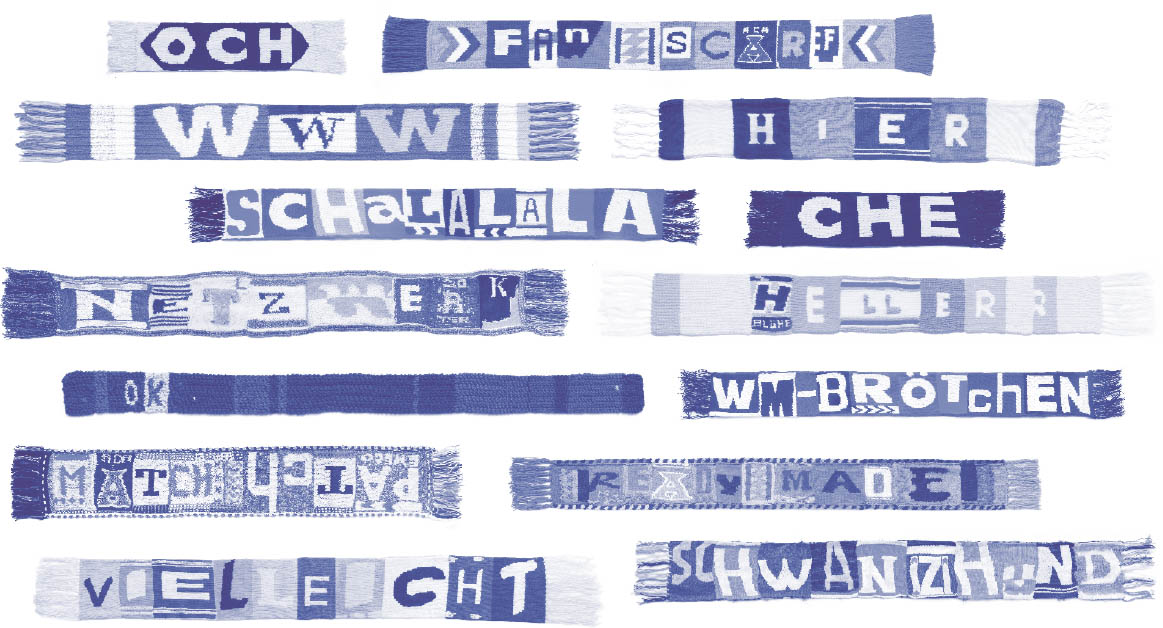
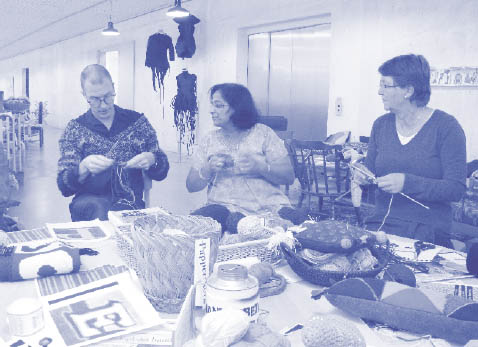
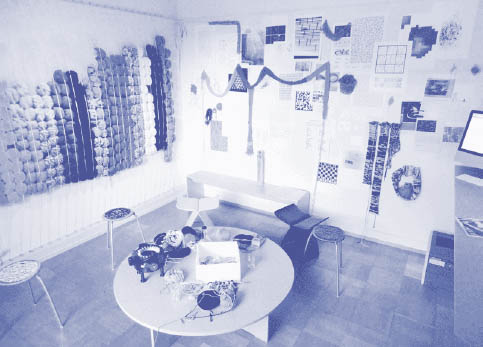
KNITTING AS A JOURNEY
Knitting isnt something you learn at a moments notice. Just like building up your repertoire in the kitchen by getting to know recipes, it takes time, practice, and an exchange of ideas. Therefore, this book is the result of a number of different projects that I undertook throughout the past years.
In the Schalalala! fan scarf remix project (starting during the 2006 World Cup), I developed an interface, together with designer/programmer Jan Lindenberg, in which users could digitally remix original soccer fan scarves. Pixelated fan scarves from private collectors websites, eBay, and official club stores served as patterns. Originally not a knitter, I initiated a knitting circle to knit up some of the remixes. Here, my knitting repertoire gradually expanded [] .
One result was the Jnkping Letter Archive, an online library of letter knitting patterns I developed for the Craftwerk 2.0 exhibition in Jnkping in Sweden in 2009 [] . The resulting aleatoric text was enhanced by the multitude of personal knitting techniques brought by the participants.
Next page

